Top 15 Customer Loyalty Trends to Follow in 2024
- Published
- 7 min reading

From the end of the third-party cookies to further AI advancements, 2024 is definitely shaping up to be an exciting and challenging year. Prepare yourself for the upcoming changes with our list of the most important trends to emerge in loyalty marketing.
Why Customer Loyalty Programs Are Here to Stay
2023 was a difficult year for sales. With the post-pandemic aftermath (by now, the U.S. economy alone has lost an estimated $14 trillion due to COVID-19), soaring inflation, and ongoing conflicts in the East, the global economy is still under a serious recession threat. While the prognosis for next year is turning slightly optimistic, the damage is already done – and mirrored in customer behavior. When times are rough, people are simply spending less and try to save up more. Their focus is shifting – from luxuries like travel to basic necessities like groceries – customers are becoming increasingly aware of every dollar that leaves their pocket.
That’s why 2024 seems like the perfect year to implement customer loyalty in your business strategy.
Since loyal customers spend 31% more than new ones and are responsible for 65% of a brand’s purchases, a successful loyalty strategy may just be the thing you need to deal with the financial crisis, understand your customers better, and keep them attached to your brand. That is – if you get your loyalty offering right.
Read on to find out which loyalty trends can help you in 2024.
15 Customer Loyalty Trends for 2024
1. Society 5.0: Gaining trust
Technology has never been so ingrained into everyday life as it is now. Modern devices have seeped into basically every area of our reality, transforming society. To address these changes, in 2016, the Japanese government coined the term “Society 5.0” – a new level of social organization using technological advancement to drive a more progressive future.
Society 5.0 aims to preserve our climate, reduce inequity, and blur the lines between the online and physical experience. While the theory isn’t derived from marketing studies, its findings can definitely be rendered helpful in loyalty marketing. After all, the key to brand loyalty is to understand your customers – starting with who they are.
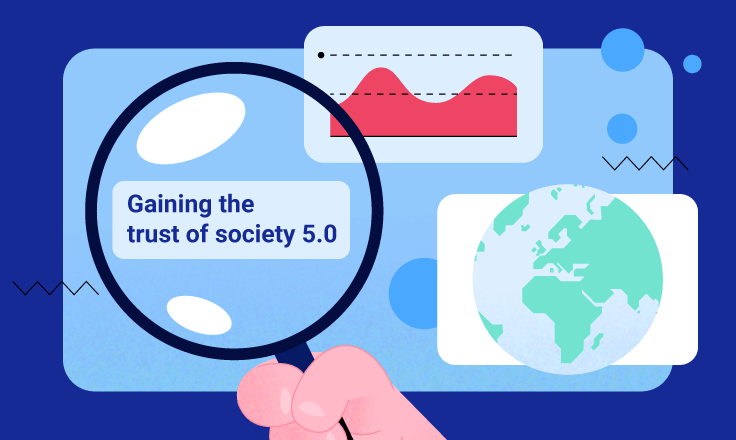
2. Emotional loyalty
Did you know that as much as 80% of customers want a more emotional relationship with the brands they buy from? Despite appearances, customer loyalty programs are not just about discounts and rewards. Modern consumers care about more than just money – they want to feel understood, appreciated, and heard. They want to feel like the brands they engage with share their values.
That’s why it’s so crucial to focus on the emotional aspect of customer loyalty. Fostering an emotional relationship is a win-win – you give your clients what they desire and, as a result, gain loyal shoppers who are more likely to stay with you than those motivated by money. (If you want to learn how to do it, download our e-book).
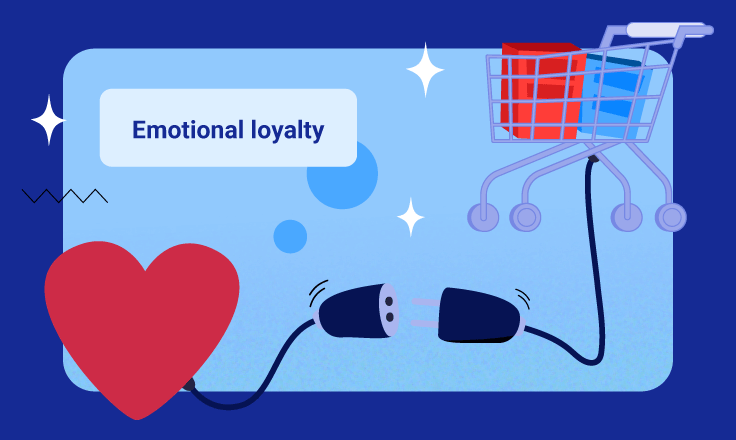
3. Micro-segmentation
2023 was a year that showed us the importance of building a strong foundation. While we, as marketers, can’t control events like pandemics or recessions, we can control how our offerings address the challenges they impose. In turbulent times, understanding our customers is more important than ever. From tribal segmentation to a more detailed analysis, taking it to the almost-granular level should be our starting point in building loyalty campaigns.
Honing the data is critical for better interpretation of our customers’ needs and coming up with ways to meet them on the most basic tiers.

4. New era of gamification
As far as customer loyalty program trends go, gamification is definitely a winner. Even though it’s hardly new – the term was coined in 2002 by Nick Pelling, and the concept itself has been around for decades – it’s not going away anytime soon. Because gamification simply works.
According to a study by Snipp Interactive, a Canadian marketing company, incorporating gamification into loyalty programs can lead to a 47% increase in customer engagement, a 22% boost in brand loyalty, and a 15% rise in brand awareness. From leaderboards to progress bars – gamification can take on a lot of different forms. In 2024, it can be helpful to spice it up with modern technologies, such as augmented and virtual reality, for a more immersive customer experience.

5. Combining AI with human resources
2023 was the year of AI. From Chat GPT to Gemini, generative artificial intelligence has entered the mainstream like never before and has left its mark on most industries, including marketing.
Marketers all over the world have been using AI tools to hone their strategies, get more detailed insights, and collect customer data. Artificial Intelligence proved to be a major force driving customer engagement and loyalty program success. But its efficacy can be even more impressive when combined with human skills and resources.
By bringing together chatbots and human support or blending predictive analytics with human creativity for more personalized experiences, you can enhance your loyalty strategy and report improved customer satisfaction.

6. Green loyalty programs
The list of top customer loyalty trends for 2024 wouldn’t be complete without mentioning sustainability. Our collective interest in the environment has reached its all-time peak, and it’s slowly affecting more and more areas of our everyday lives. Arguably, none so more than shopping. With as much as 80% of customers favoring sustainable brands and 60% willing to pay more for green products, it’s undeniable that consumer habits are pro-eco. And marketers are stepping up.
For example, Etihad Airways decided to incorporate sustainability in its loyalty offering by starting up the Conscious Choices program, in which members are rewarded for making eco-traveling choices, such as packing lighter, opting for smaller cities, or even taking reusable water bottles to the airport. That’s something to strive for and take inspiration from in 2024.
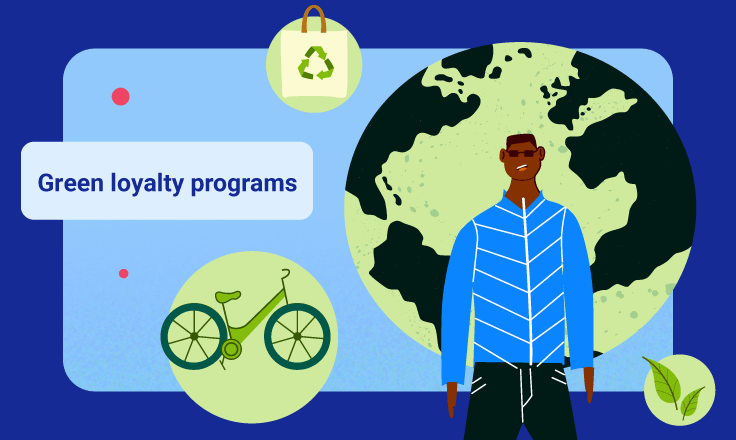
7. D2C loyalty
In 2021, Direct-to-Consumer (D2C) e-commerce sales in the United States surpassed 128 billion dollars. Focusing on the direct end-user is becoming increasingly popular and for a good reason. By fostering direct communication without the involvement of intermediaries, your business positions itself as more of a friend than a seller, which effectively boosts emotional loyalty and turns your customers into brand ambassadors. Investing in a D2C loyalty program also offers greater control over marketing activities and allows you to respond to your customer’s needs more effectively.
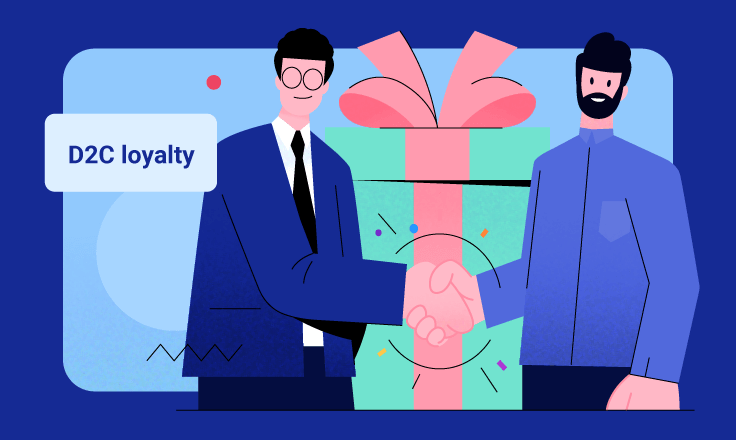
8. Coalition loyalty
Strategic partnerships are one of those customer loyalty trends that seem too good to pass up.
- For the owner of a loyalty program, they offer an increased wallet share, enhanced data insights, and a boost in customer base.
- For the guest star of a loyalty program, they offer access to new customer segments, brand exposure, and cross-promotion.
- For the members of a coalition loyalty program, they offer easier point collection, a wider range of rewards, and increased value from savings.
The key trend that is being observed in the evolution of coalition programs is their democratization, where partners joining the coalition have a much stronger voice and much more control of their offering through the program.
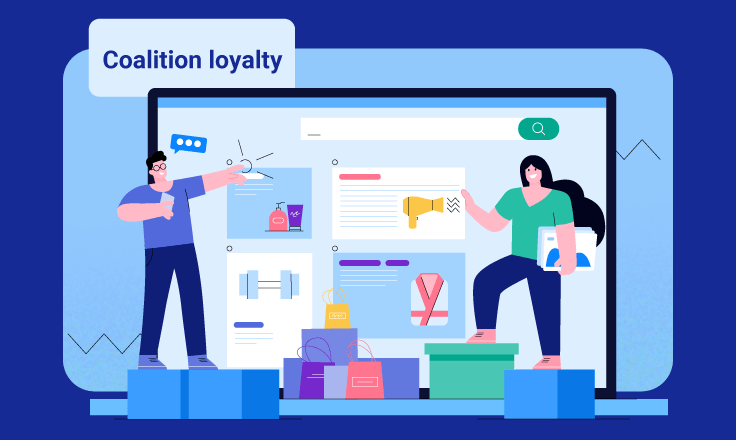
9. 360 customer view
While the 360 customer view theory – in which we gather customer data from different touchpoints for a more comprehensive overview – isn’t new, it still remains relevant. In 2024, it can be particularly helpful to analyze it in terms of hidden potentials for a stronger loyalty ecosystem.
Every interaction a client has with your brand is a chance to gain some new piece of info on how or why they do so and, consequently, improve your loyalty program. This advice may seem very simple (in theory), but since data is still undervalued and underused, the point should still find its place in your loyalty strategy for next year. Especially if you focus on technologies that can enhance your 360 customer view.

10. Focusing on the omnichannel experience
Here’s some information to consider when preparing a marketing strategy for 2024. Marketers using three or more channels in a campaign earn a 287% higher purchase rate than those using a single-channel campaign – and omnichannel shoppers have a 30% higher customer lifetime value than those using just one channel. The power of the omnichannel approach has been proven time and again, and if you’re not using it in your loyalty program, it’s time to start.
From VR shopping to “smart” mirrors in changing rooms – blurring the lines between the online and in-store experience is something that your customers will increasingly demand, so you have to try new solutions that will enable it.
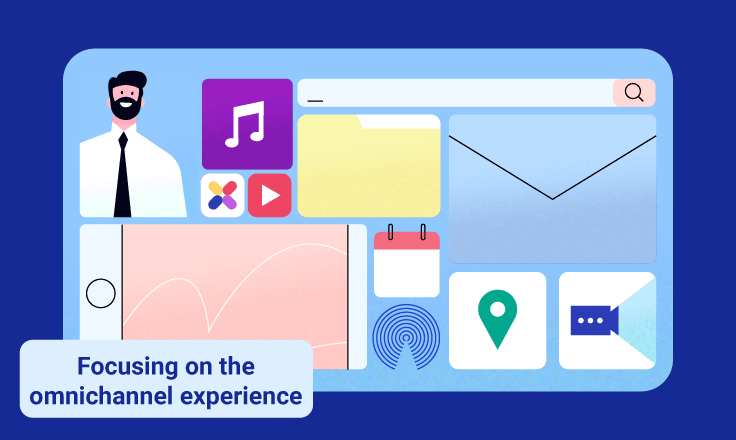
11. Generation-targeted offer
Exceeding customer expectations is not possible without tailoring your offer and content by age group. This became evident in the last couple of years when Gen Z entered the world of consumerism and transformed the way we think about shopping. From social media presence to shared values – young consumers have a different set of requests toward brands they engage with than their parents.
For example, when asked about their most trusted source of product recommendation, 11% of Gen Z reps pointed out social media influencers, whereas for Boomers and Gen X, it was only 2% and 3%, respectively. That’s why focusing on the generational differences when crafting marketing communication in 2024 is still the way to go.
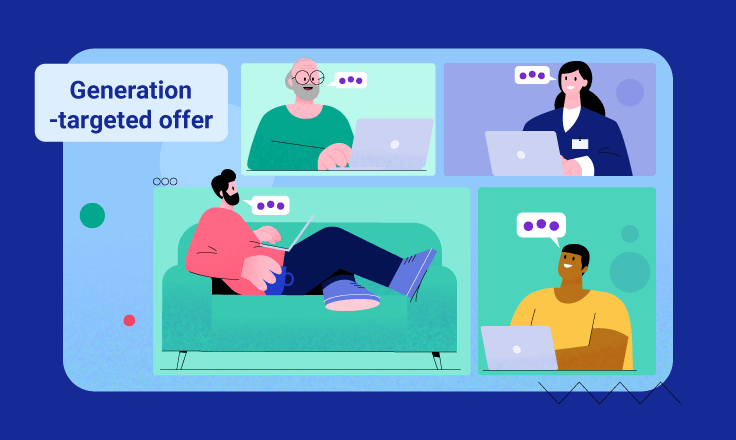
12. Subscription loyalty
If you can have something for free, why would you want to pay for it? Well, when it comes to loyalty programs, the answer is not that simple. Turns out, a lot of costumers are still willing to go that extra mile to reap additional benefits from loyalty. And these customers often represent the highest value.
A 2020 study showed that members of premium loyalty programs can spend twice as much on your brand as those enrolled in free loyalty initiatives (60% vs. 30%). These findings ring true with the experience of many world-famous companies, including Walmart and Barnes & Noble, which both offer exclusive benefits to paying members. If you want to follow their example, 2024 may be the perfect time to extend your loyalty program with premium iterations for premium members.

13. Replacing cookies with customer loyalty
On January 4th, Google will start its plan to disable all third-party cookies. While zero- and first-party data is here to stay, the new ban will strongly affect how we obtain and use information. However, the cookieless future doesn’t have to scare the marketers away. That’s because customers are more than willing to still share their data – as long as they get something in return.
And for many – 92% to be exact – that something is loyalty points. If you leverage gamification to collect consumer data, you not only gain insights into habits and needs but also increase their engagement. Talk about a win-win!

14. Self-personalization
Another customer loyalty trend on our list is a personalization phenomenon taken one step further – giving your clients an opportunity to co-create the offer they’re going to use. That way, every product or service they buy is catered to their very own unique needs and has a much higher chance of meeting your customers’ expectations.
“The self-personalization trend is something that we see more and more in modern loyalty programs, in which loyalty benefits sets are not predefined by the brand, but rather designed by the members based on the choices they’re given. This is the highest level of personalization it can be,”
Piotr Kozłowski, VP of Consulting at Comarch Loyalty.
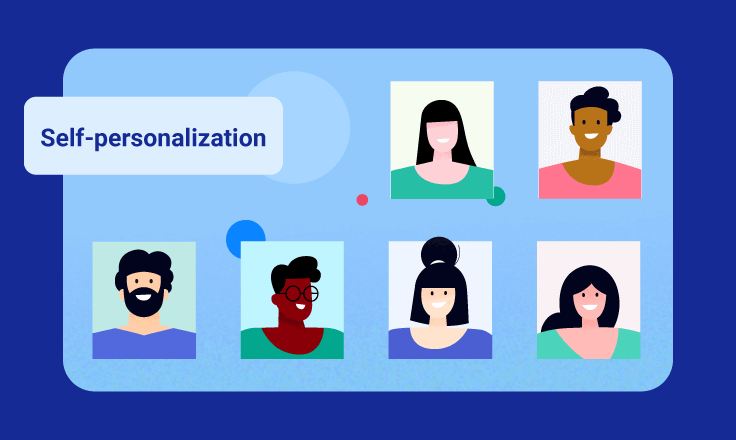
15. Testing new channels
Last but not least, there are several emerging channels that can enhance your marketing communication. While the classics like social media or e-mails are still relevant, we should also take advantage of modern technologies and incorporate them into our strategies.
Channels like video content or live streaming platforms are gaining a lot of popularity in almost every industry, and as much as 91% of customers claim they want to see more online video content from brands. AI-driven messaging apps, chatbots, and voice assistants can also aid your communication and help you reach a wider, more tech-oriented audience in 2024.

The Future of Loyalty Programs
Considering how rapidly technology is developing, loyalty marketing is poised for a lot of changes in 2024. To keep up with the growing demands of modern consumers, loyalty programs will have to become even more customer-centric, with features such as:
- Robust data analytics
- Elements of VR/augmented reality
- Gamification features and functions
All of these features offer incredible ways to build immersive, seamless, and personalized experiences. Sustainability will also move at the forefront of marketing activities, which will (and already does) include eco-friendly initiatives, carbon footprint offsets, and rewards for responsible consumer behavior. Through these tools and technologies, brands will be able to foster a greater sense of community and excitement, both of which are crucial for building an emotional, long-lasting bond with their customers.
Want 2024 to be the year your brand loyalty really takes off? Check out the Comarch Loyalty Marketing Platform and get your loyalty program 2024-ready!



